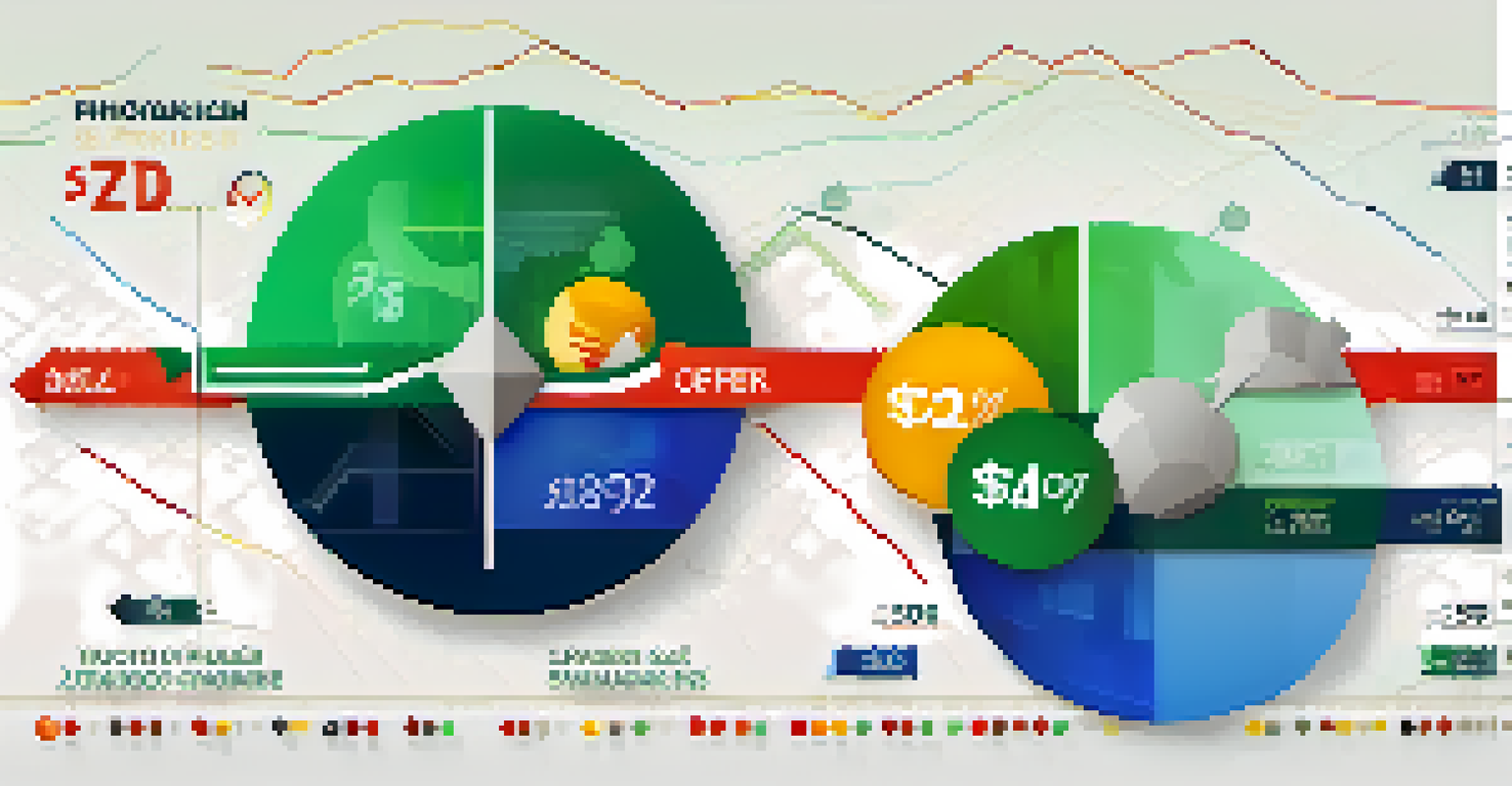What Is Gas in Ethereum Mining? Understanding Its Functionality

Defining Gas in the Ethereum Ecosystem
Gas is a crucial concept in the Ethereum network, acting as a measure of computational effort required to execute operations. Think of it as the fuel that powers transactions and smart contracts on the blockchain. Just as cars need fuel to run, Ethereum needs gas to perform various tasks, ensuring that everything runs smoothly.
Gas is the fuel for executing transactions on the Ethereum network, ensuring that everything operates smoothly and efficiently.
Each operation, whether it's a simple transaction or a complex smart contract execution, requires a certain amount of gas. This amount can vary significantly depending on the complexity of the operation. For example, sending ETH from one wallet to another requires less gas than deploying a new decentralized application.
Ultimately, gas serves as a way to allocate resources efficiently within the Ethereum network, preventing spam and abuse. Users must pay for gas in Ether (ETH), which incentivizes miners to validate transactions and maintain the integrity of the blockchain.
How Gas Prices Are Determined
Gas prices in Ethereum fluctuate based on supply and demand dynamics, much like any other commodity. When the network is busy and many transactions are being processed, the price of gas tends to rise. Conversely, when activity is low, gas prices can decrease, making it cheaper to execute transactions.

Users can specify the gas price they are willing to pay as part of their transactions. Miners prioritize transactions with higher gas prices, leading to faster confirmations. So, if you want your transaction to be processed quickly, offering a higher gas price can be beneficial.
Gas Fuels Ethereum Transactions
Gas acts as the essential fuel for executing transactions and smart contracts on the Ethereum network.
Moreover, Ethereum's transition to a proof-of-stake model aims to improve efficiency and potentially stabilize gas prices in the long run. Understanding these dynamics can help users make informed decisions about when and how to transact on the network.
The Role of Miners in Gas Transactions
Miners play a vital role in the Ethereum ecosystem, processing transactions and validating them on the blockchain. They do this by solving complex mathematical problems, and in return, they earn the gas fees paid by users. This incentivizes miners to keep the network secure and operational.
Understanding gas limits and prices is essential for navigating the complexities of Ethereum's ecosystem effectively.
When you submit a transaction, it enters a pool called the mempool, where miners can see pending transactions. Miners select transactions based on the gas price offered, so those willing to pay more may see their transactions processed more quickly. It's a competitive environment where miners strive to maximize their earnings.
As Ethereum continues to evolve, especially with updates like Ethereum 2.0, the relationship between gas, miners, and the overall network efficiency will likely change. Keeping an eye on these developments can provide valuable insights into the future of Ethereum mining.
Gas Limits and Their Importance
Every transaction on the Ethereum network has a gas limit, which is the maximum amount of gas the user is willing to spend. Setting an appropriate gas limit is crucial because if your transaction exceeds this limit, it will fail, and you'll lose the gas fees paid. It's like setting a budget for a shopping spree—you need to know when to stop.
The default gas limit for transactions is usually sufficient for simple operations. However, more complex transactions, such as those involving smart contracts, may require higher limits. Users can adjust their gas limits based on their specific needs, but they should do so cautiously to avoid transaction failures.
Gas Prices Reflect Network Demand
Gas prices fluctuate based on supply and demand, with higher prices during busy network periods.
Understanding gas limits not only helps in successfully executing transactions but also contributes to a more efficient network. By setting appropriate limits, users can help reduce congestion and promote smoother operations within the Ethereum ecosystem.
Gas and Smart Contracts: A Closer Look
Smart contracts are self-executing contracts with the terms of the agreement directly written into code. When these contracts are executed, they consume gas based on their complexity and the operations they perform. This means that deploying or interacting with a smart contract often requires more gas than a simple ETH transfer.
For instance, a smart contract that manages a decentralized finance (DeFi) application may involve multiple functions and interactions, leading to higher gas usage. Understanding this helps users gauge the costs associated with engaging with these contracts, allowing for better budgeting.
As Ethereum evolves and developers optimize their smart contracts, the impact on gas consumption may decrease, making it more user-friendly. However, for now, being aware of how gas affects smart contracts is essential for anyone looking to navigate the DeFi landscape.
The Impact of Network Congestion on Gas Fees
Network congestion occurs when there are more transactions than the Ethereum network can process at a given time. This can happen during events like NFT drops or significant market movements. When congestion occurs, gas prices typically spike as users compete to have their transactions prioritized.
During periods of high demand, users may find themselves paying significantly higher gas fees, which can be frustrating. It’s similar to trying to book a flight during peak travel season—prices skyrocket due to increased demand. Understanding this concept can help users time their transactions better.
Miners Influence Gas Transaction Speed
Miners prioritize transactions based on gas prices, allowing users to expedite processing by offering higher fees.
To mitigate the impact of congestion, Ethereum developers are working on solutions like layer 2 scaling solutions and the Ethereum 2.0 upgrade. These advancements aim to enhance the network's capacity and efficiency, ultimately leading to lower gas fees.
Future Developments and Gas in Ethereum
The future of gas in Ethereum is closely tied to ongoing developments within the network. With the Ethereum 2.0 upgrade, which shifts the network from proof-of-work to proof-of-stake, there are hopes for improved scalability and reduced gas fees. This transition aims to make Ethereum more accessible to a broader audience.
Additionally, layer 2 solutions, such as Optimistic Rollups and zk-Rollups, are designed to help process transactions off the main Ethereum chain. By reducing congestion on the main chain, these solutions can lead to lower gas fees and faster transaction times, enhancing the overall user experience.

As these changes unfold, users will need to stay informed about how they impact gas dynamics. Embracing these advancements can lead to a more efficient and cost-effective way to interact with the Ethereum network.